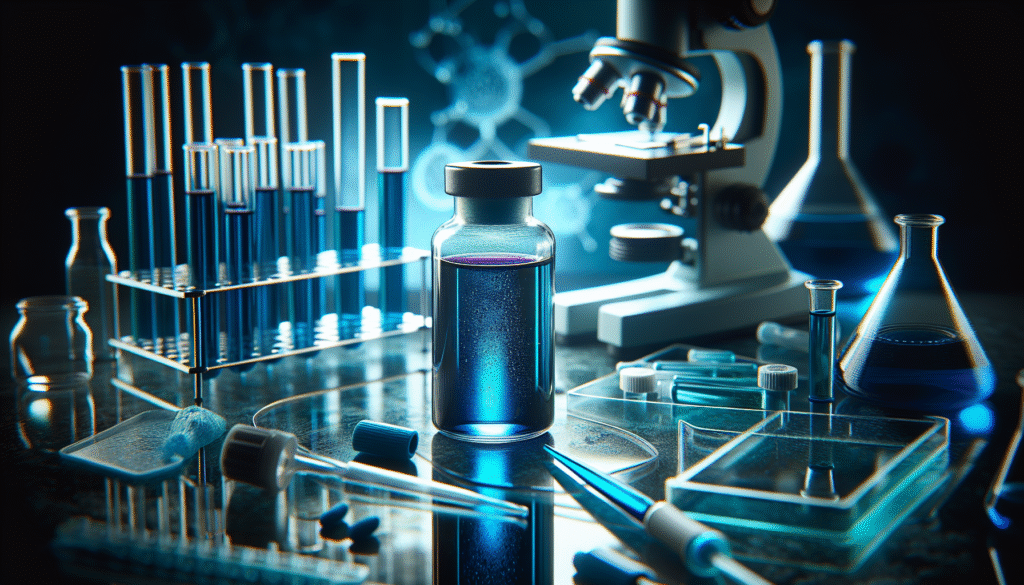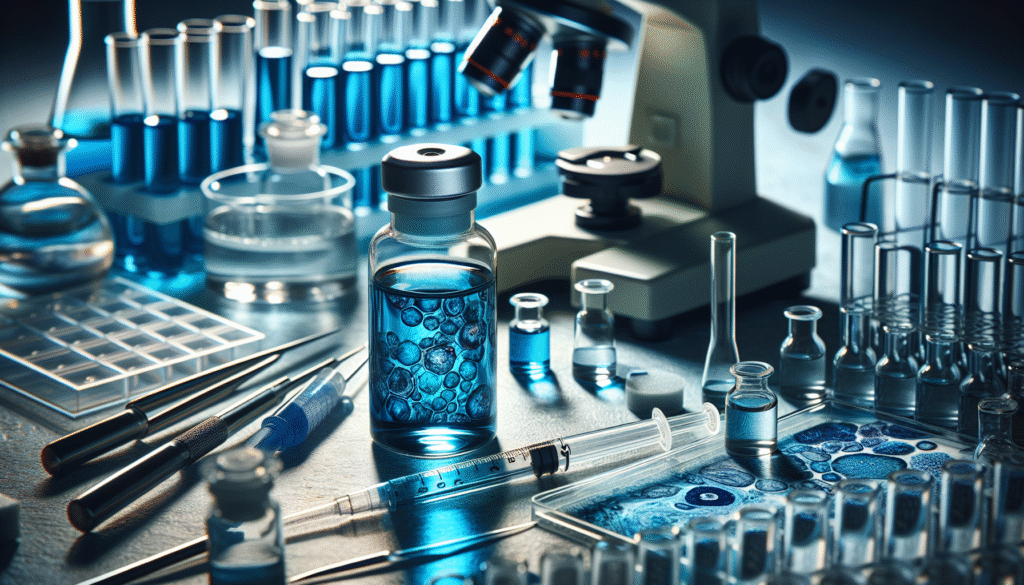
Have you ever considered how important staining techniques are in the field of histology? The right stain can illuminate the intricate details of tissue samples, revealing essential characteristics that significantly impact diagnosis and research. Among the various stains available, methylene blue stands out due to its unique properties and advantages.

Understanding Methylene Blue
Methylene blue, a synthetic stain, was initially developed as a dye in the 19th century. Since then, it has evolved into a vital tool in scientific applications, particularly in histology and microbiology. This cationic dye can interact with cellular components due to its positive charge, allowing for efficient visualization of tissues.
Chemical Properties
The efficacy of methylene blue is closely tied to its chemical composition. As a thiazine derivative, it possesses properties that enable binding to nucleic acids and certain proteins. This binding enhances its ability to stain structures like nuclei and cytoplasm, facilitating a clearer observation of tissue morphology.
Staining Mechanism
Methylene blue operates through a mechanism of selective staining. Upon application to a tissue sample, it penetrates cellular components and binds to negatively charged structures. This binding is particularly pronounced with nucleic acids, making it invaluable in observing cell structures in histological studies. The result is high contrast between stained and unstained components, which aids in detailed examination.
Advantages of Methylene Blue in Histology
High Contrast Visualization
One of the most significant advantages of using methylene blue is its ability to produce high contrast images of tissue samples. This is critical in histological studies, where distinguishing between different cellular structures can influence diagnosis and treatment decisions.
- Methylene blue effectively stains nuclei, allowing for easy differentiation between cell types.
- The cytoplasm of cells is also highlighted, improving overall cell morphology visibility.
This high contrast makes it easier to identify abnormalities or variations in tissue that may indicate disease pathology.
Versatility Across Tissue Types
Methylene blue is known for its versatility, making it suitable for a broad range of tissues. Whether working with animal or plant cells, methylene blue can effectively enhance visibility. This broad applicability is invaluable for researchers and clinicians alike, allowing for consistent results in diverse projects.
Cost-Effectiveness
In addition to its technical advantages, methylene blue stands out as a cost-effective option. Many laboratories face budget constraints, making it essential to choose staining methods that do not compromise quality. Methylene blue is relatively inexpensive, making it accessible for various research settings and educational institutions.
Ease of Use
The application of methylene blue is straightforward, even for those new to histology. The staining protocol typically requires minimal equipment and can be performed with standard laboratory supplies:
- Fix the tissue sample appropriately.
- Prepare a dilute solution of methylene blue.
- Incubate the samples for the specified time.
- Rinse and observe.
Such simplicity ensures that even those with limited experience can achieve reliable results.
Safety Profile
Safety in the laboratory is paramount, and methylene blue boasts a favorable safety profile. While personal protective equipment (PPE) should always be used, the dye’s toxicity is relatively low compared to other staining agents. This attribute makes methylene blue a preferred choice, particularly in educational and research settings where safety protocols must be maintained.
Common Applications of Methylene Blue
Diagnostic Histology
In clinical practices, methylene blue plays a vital role in diagnostic histology. By allowing for detailed observation of tissue samples, it supports pathologists in identifying diseases such as cancer. For example, tissues exhibiting abnormal nuclear morphology can be readily identified, aiding in early and accurate diagnoses.
Research in Cellular Biology
Methylene blue is extensively utilized in cellular biology research due to its ability to stain nuclei effectively. Researchers can track cell proliferation, apoptosis, and other cellular processes with greater clarity. This improved visualization can reveal insights into cellular behavior and provide answers to essential biological questions.
Microbial Studies
In microbiology, methylene blue is also a common stain used to observe bacterial cells. Its staining properties enable the differentiation of various bacterial species based on morphology, which can significantly affect treatment strategies. The high contrast produced by methylene blue facilitates the identification of pathogens in clinical samples, contributing to public health efforts.
Limitations of Methylene Blue
Limited Specificity
Although methylene blue is a versatile stain, it does not exhibit high specificity for certain structures. In some cases, it may stain multiple components within a cell, leading to a potential loss of detail. Researchers must be mindful of this limitation and may need to employ complementary staining techniques to achieve the desired clarity.
Fading Over Time
Another drawback of methylene blue is the potential for fading when exposed to light. Over time, samples may lose their vibrancy, making long-term observations challenging. Proper storage and handling conditions can mitigate this issue, emphasizing the importance of addressing environmental factors during and after the staining process.
Potential for Artifacts
While methylene blue enhances visibility, it is essential to be aware of potential artifacts. If not applied correctly, the dye may lead to the induction of false-positive results or the obscuring of essential details. Utilizing appropriate controls and consistency in technique can help minimize the risk of misleading interpretations.

Optimizing Methylene Blue Use
Protocol Adjustments
Fine-tuning the staining protocol can significantly improve outcomes. Adjusting the concentration of methylene blue, the incubation time, and even the temperature can lead to better staining results. Regularly reviewing and optimizing these parameters will help ensure consistent and reliable outcomes.
Combining Stains
Using methylene blue in conjunction with other stains can enhance the overall clarity and specificity of tissue samples. For example, combining methylene blue with eosin or Gram stain can provide detailed insights into cellular structures and clarify ambiguous findings. This multi-stain approach allows for a more comprehensive analysis of the sample.
Training and Familiarization
Proper training in staining techniques is crucial for the successful application of methylene blue. Ensuring laboratory personnel are well-versed in the appropriate methods will lead to higher-quality results. Regular training sessions and discussions about best practices can foster an environment of continuous improvement.
Conclusion
In conclusion, the advantages of using methylene blue in histology are plentiful. Its high contrast visualization, versatility across tissue types, cost-effectiveness, ease of use, and favorable safety profile make it an invaluable tool for researchers and clinicians alike. While being aware of its limitations, employing methylene blue skillfully can yield significant benefits for pathological assessments, research projects, and educational purposes.
By understanding the nuances of this staining agent, you can harness its potential to improve your histological analysis and contribute to scientific advancements. Methylene blue is not merely a stain; it is an essential asset in your histological toolkit, enabling you to illuminate the complex world of cellular structures.